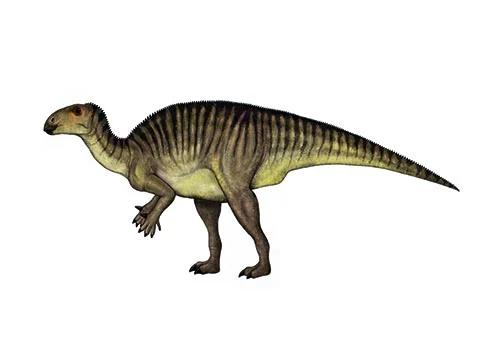Jinzhousaurus (Jinzhou lizard)

Jin-zu-sor-us
X. Wang & X. Xu - 2001
Herbivore
Estimated 2 meters long
Euornithopod
J. yangi (type)
China, Liaoning Province - Yixian Formation
Early Cretaceous, 125 million years ago
Jinzhousaurus Facts
Jinzhousaurus, meaning “Jinzhou lizard,” is a genus of small herbivorous dinosaur that lived during the Early Cretaceous period, around 125 million years ago. Its fossils were discovered in the Yixian Formation of western Liaoning, China in the early 2000s.
Jinzhousaurus belonged to a group of dinosaurs known as ornithopods, which were bipedal herbivores that walked on two legs and were characterized by their beak-like mouths and lack of teeth in the front of their jaws. Jinzhousaurus was a relatively small ornithopod, estimated to have been around 2 meters (6.5 feet) in length and weighing about 20 kilograms (44 pounds).
One of the most distinctive features of Jinzhousaurus was its teeth. Unlike other ornithopods, which had teeth that were uniformly sized and shaped, Jinzhousaurus had a unique arrangement of teeth in its upper jaw, with the front teeth being much larger and longer than the back teeth. This has led some paleontologists to suggest that Jinzhousaurus had a specialized diet, perhaps feeding on tougher or harder plant materials that required specialized teeth to break down.
The discovery of Jinzhousaurus has helped paleontologists better understand the diversity of herbivorous dinosaurs during the Early Cretaceous period. It is also one of the few known ornithopods from the Yixian Formation, which is best known for its feathered dinosaurs, including the famous Microraptor.
Jinzhousaurus is known from only a few fragmentary fossils, including parts of the skull, lower jaw, and postcranial skeleton. Despite its incomplete fossil record, however, this dinosaur has provided valuable insights into the evolution and biology of early ornithopods, and continues to be the subject of ongoing research and study.



